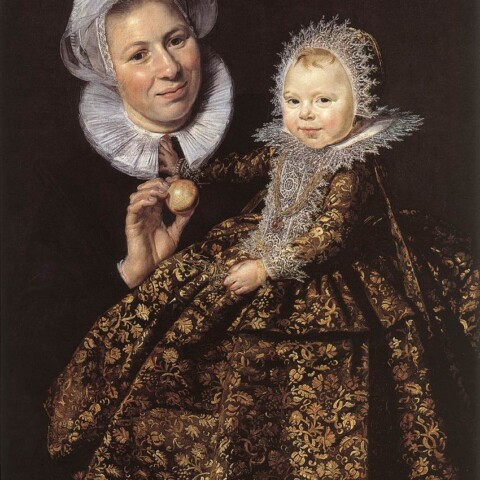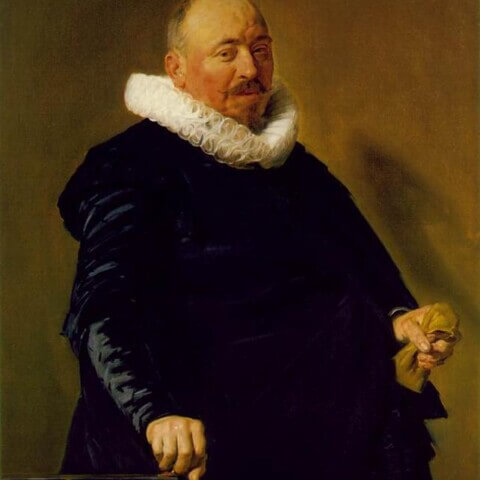Frans Hals

Frans Hals (c. 1582 – August 26, 1666) was a renowned Dutch Golden Age painter, primarily recognized for his pioneering approach to portraiture. Born in Antwerp, Belgium, he moved to Haarlem, Netherlands, with his family as a young child to escape the Spanish Fury. It was in Haarlem, a thriving hub for artists at the time, that Hals spent most of his life and developed his artistic career.
Hals studied under the artist Carel van Mander, whose influence could be seen in his early works. However, Hals soon developed his unique style characterized by his innovative and lively approach to portrait painting. He distinguished himself from other contemporary Dutch painters like Rembrandt and Vermeer by his preference for capturing his subjects in more spontaneous, often jovial or dynamic poses, showing a mastery of capturing human emotion and personality, a testament to his excellent observation skills.
He painted both individual and group portraits, his famous ‘merry company’ and ‘regent’ pieces presenting a slice of life from 17th-century Netherlands. Among his most acclaimed works are “The Laughing Cavalier” (1624) and “The Jolly Toper” (1628-30), as well as the civic guard pieces “The Officers of the St George Militia Company in 1639” and “The Officers of the St Adrian Militia Company in 1633”. Hals was also an influential teacher, with his pupils including Judith Leyster and Adriaen Brouwer.
Despite his artistic success, Hals lived much of his life in poverty, particularly in his later years. The city council of Haarlem had to provide him with financial support, indicating his difficulties. He died in Haarlem in 1666, leaving behind a large body of work that has considerably influenced the course of portrait painting, extending well beyond his lifetime.
Hals’ reputation dipped somewhat after his death but underwent a significant revival in the 19th century, and he was hailed as a master by the Impressionists, who admired his loose brushwork and ability to capture human vitality. Today, Frans Hals is considered one of the great masters of the Dutch Golden Age, and his innovative and vivid portraiture continues to inspire artists worldwide.
- 1
- 2


